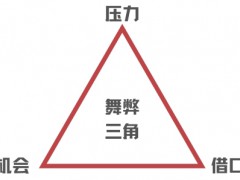据油价网1月27日消息称,疫情管控的优化和供应链的转移提振了亚洲的增长,尽管通胀和气候变化带来了重大阻力。
虽然泰国和越南等东南亚国家在2021年取消了限制,但2022年最后一个季度,日本向外国游客重新开放边境,亚洲疫情管理措施优化,表明亚太地区的经济正在逐步恢复正常。
同样阻碍全球经济增长的问题——通胀、供应链瓶颈以及地缘政治冲突导致的大宗商品价格高企——也影响了亚洲经济体;然而,该地区的表现继续优于世界其他地区。
由于大宗商品价格高企继续影响供应链,东亚是2022年第三季度唯一实现贸易增长的地区,尽管全球贸易额下滑。
曹海斌 摘译自 油价网
原文如下:
Asia Set For Rapid Renewable Energy Expansion In 2023
An easing of Covid-19-related restrictions and shifting supply chains have bolstered growth in Asia, even as inflation and climate change generate significant headwinds.
While South-east Asian countries such as Thailand and Vietnam had lifted restrictions in 2021, the last quarter of this year saw Japan reopen its borders to foreign travellers and Asia begin to roll back Covid-19-contaiment policies, signalling a gradual return to economic normalcy in the Asia-Pacific region.
The same issues stalling economic growth across the globe – inflation, supply chain bottlenecks and high commodity prices stemming from the third larggest producer’s ongoing the war – have impacted Asian economies; however, the region continues to outperform the rest of the world.
As high commodity prices continue to impact supply chains, East Asia was the only region to see trade growth in the third quarter of the year, even as global trade volumes sagged.
Much of the downgrade in regional growth forecasts is due to Asian slowdown, with the IMF expecting the country’s growth to dip to 3.2% in 2022 due in part to the economic barriers imposed by its stringent zero-Covid-19 policy.
免责声明:本网转载自其它媒体的文章及图片,目的在于弘扬石化精神,传递更多石化信息,宣传国家石化产业政策,展示国家石化产业形象,参与国际石化产业舆论竞争,提高国际石化产业话语权,并不代表本网赞同其观点和对其真实性负责,在此我们谨向原作者和原媒体致以崇高敬意。如果您认为本站文章及图片侵犯了您的版权,请与我们联系,我们将第一时间删除。







